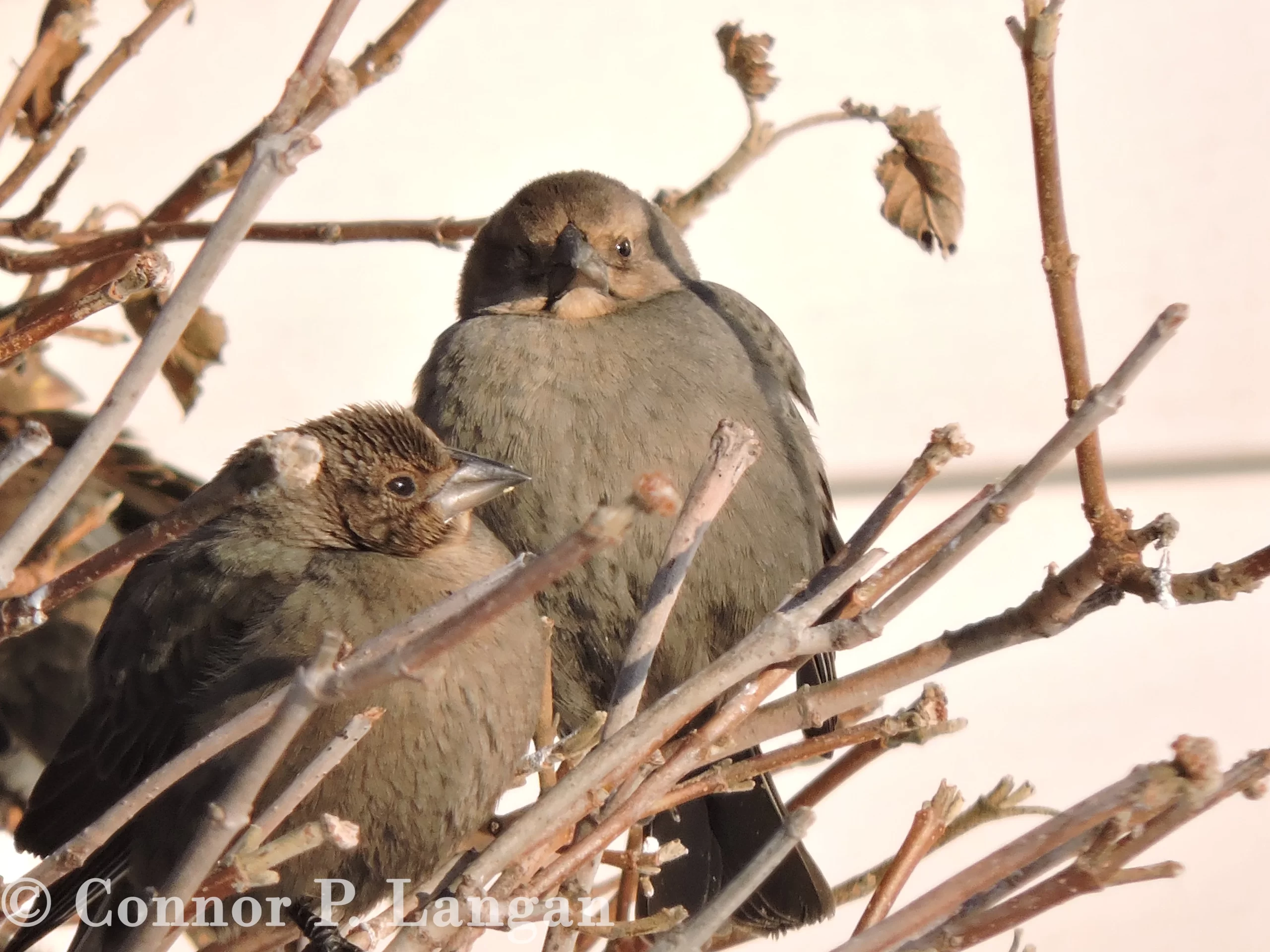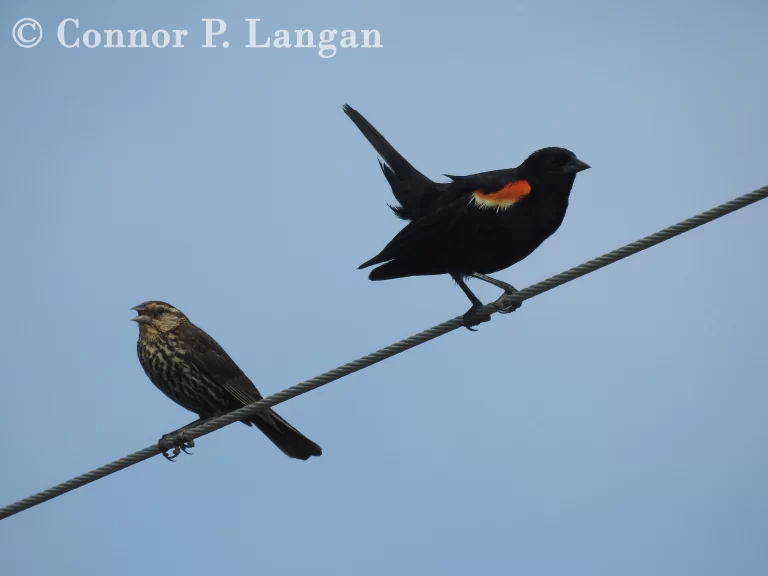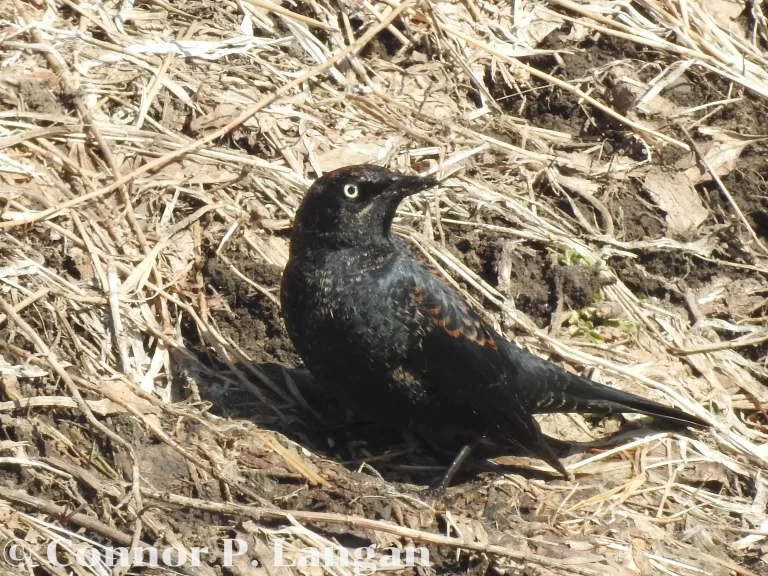Description
Brown-headed Cowbirds are small, thick blackbirds with short tails and thick, conical beaks. These birds have a beady-eyed appearance.
This species is rather small for a blackbird, measuring 7.5 to 8.7 inches in length while weighing 1.5 to 1.8 ounces.
Males have a namesake brown hood, while the rest of their bodies are a glossy black color.
Females are entirely brown, with their wings and backs being a darker shade of brown compared to the rest of their bodies.
Juveniles are brown overall with barred underparts and a scaled back.
Immature males are a mottled combination of brown and black as they develop their adult plumage.
Behavior
Brown-headed Cowbirds are social birds during all times of the year. In the fall and winter, they gather into large groups with other blackbird species.
You may see these birds foraging near livestock. Historically, Brown-headed Cowbirds foraged near groups of large herbivores such as bison and elk to take advantage of the food items that they disturbed.
Brown-headed Cowbird Diet
These blackbirds are primarily granivorous, eating an assortment of seeds and grains. Brown-headed Cowbirds also consume insects and other invertebrates, with these organisms making up about one-quarter of their diets.
Habitat
This species is quite adaptable, being able to survive in a huge range of different habitats. Cowbirds live in open areas like grasslands, early successional habitats, rangeland, agricultural fields, and parks.
Brown-headed Cowbirds can also survive in suburbs, forest edges, and wetlands.

Range
This species is present in all of the lower 48 states of the United States. Brown-headed Cowbirds are also present in northern Mexico and southern Canada.
In the eastern United States and southeastern Canada, most cowbirds spend the winter in the southern United States. Birds living in the American West and western Canada may winter in Mexico or along the west coast.
Breeding
Brown-headed Cowbirds have perhaps the most unique breeding system of any bird in North America. These birds are brood parasites, meaning that they do not raise their own young. Instead, females deposit their eggs in the nests of unknowing songbirds.
Females seek out species of songbirds that are usually smaller than them as hosts for their eggs. They observe other birds until they discover a suitable nest in which to lay their eggs.
Females usually deposit a single egg in another bird’s nest, though they may lay 2 eggs in the nest of a host bird. Cowbirds hatch fairly quickly, as it takes birds between 10 to 12 days to leave their eggs.
Cowbird nestlings grow quickly, leaving the nest in 8 to 13 days. Since they are usually larger than the young of their host parents, they typically outcompete the other birds in the nest. Therefore, young from the host parents rarely survive in a nest with a Brown-headed Cowbird chick.
Backyard Birding
These blackbirds will visit backyard bird feeders, so watch for these birds to forage on seeds below bird feeders.
Due to the breeding habits of Brown-headed Cowbirds, these birds will not construct nests in backyards. If any of their host species reproduce in your yard, Cowbirds may try to lay eggs in their nests.
Brown-headed Cowbird Population Status
There are around 130 million Brown-headed Cowbirds today. This species has benefitted from habitat fragmentation, as such acts have increased their range.
Brown-headed Cowbird numbers have declined slightly in the last half-century, but this is likely a reflection of their host species declining in number.



